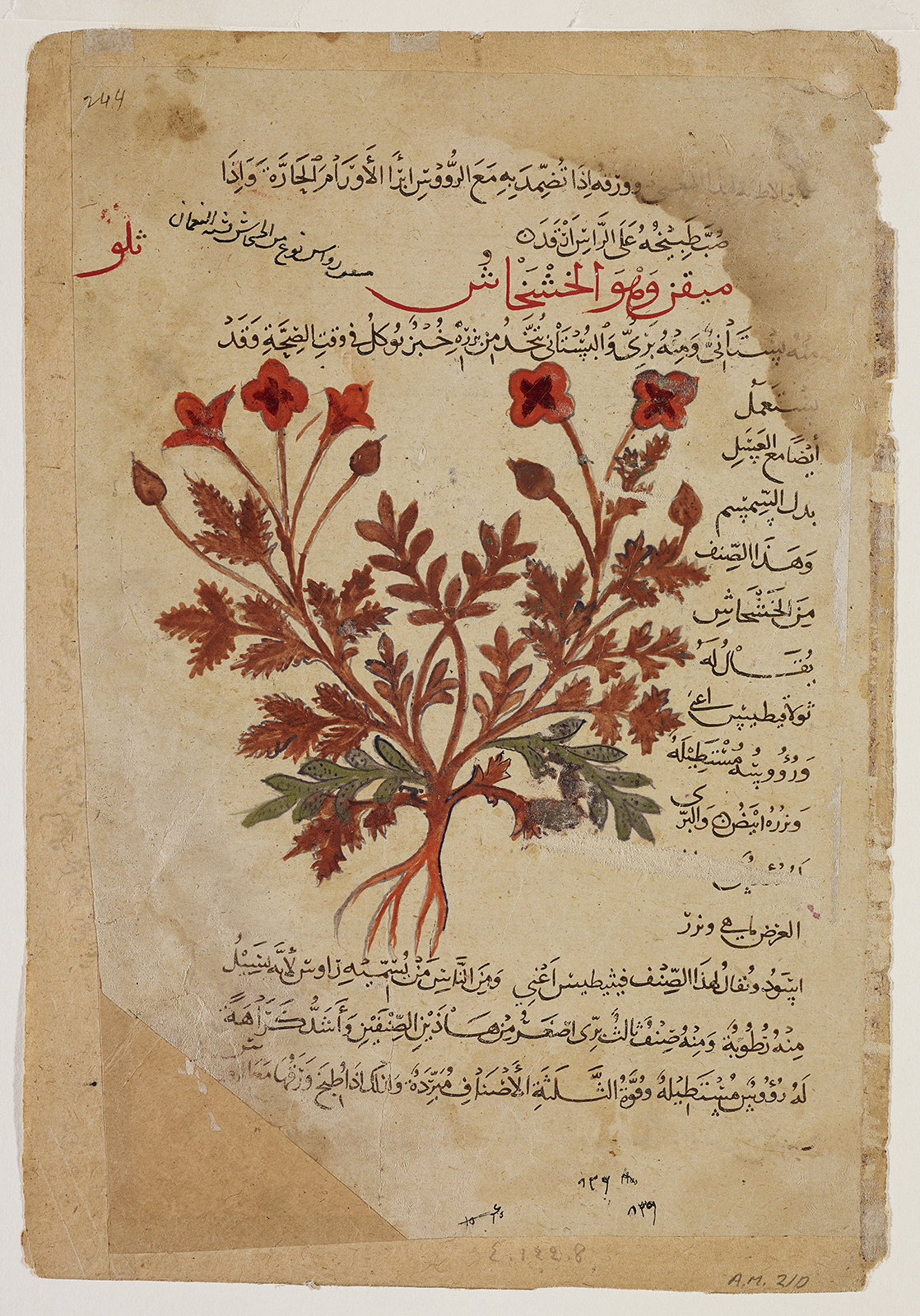Click on the image to zoom
The Poppy (al-khashkhash)
Folio from the Manuscript of Khawass al-Ashjar (The Characteristics of Trees)
- Accession Number:AKM9
- Place:Iraq
- Dimensions:29.8 x 20.5 cm
- Date:13th century
- Materials and Technique:opaque watercolour, ink, and silver on paper
This illustration of a poppy plant is part of a pharmaceutical tradition that identifies plants and herbs and explores their medicinal qualities. It is based on a treatise known as De Materia Medica, written in the first century by the Greek physician and botanist Dioscorides (died circa 90 CE) and translated into Arabic in Baghdad during the ninth century. In this folio, Dioscorides identifies three varieties of poppy seed, two of which are wild species and one that is cultivated (thylacitis) for its general health-inducing benefits. The treatise suggests baking the poppy seeds with bread or mixing them with honey, two practices still common today. Because the main function of this painting is scientific illustration, the watercolour depicts the root, stems, leaves, flowers, and pods of the poppy plant simultaneously.
Note: This online resource is reviewed and updated on an ongoing basis. We are committed to improving this information and will revise and update knowledge about this object as it becomes available.


